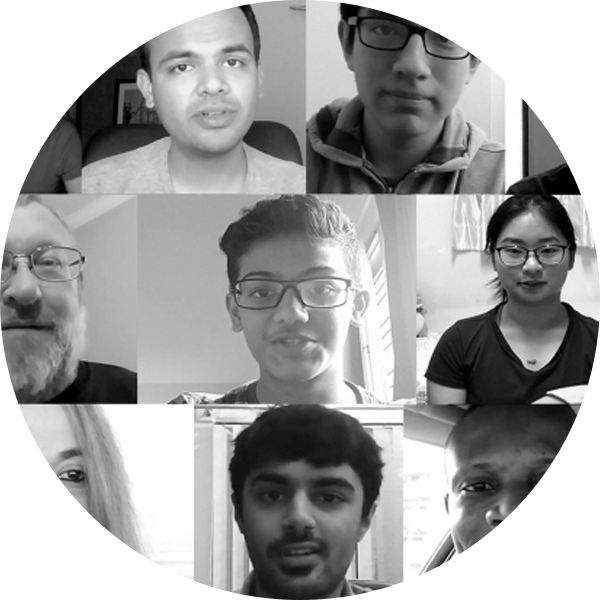
In thinking about transforming teaching and learning around the world, we first look at access. Learners who use MIT OpenCourseWare materials and take MITx on edX courses write to us throughout the year to share how these free and open resources have helped them improve their own subject matter understanding, bolster their academic pursuits, and serve as an aid for their lifelong learning.
Serving more than 11 million learners this past fiscal year alone, MIT Open Learning is truly a program of scale. One of our flagships--MITx on edX--recently reached a special milestone for one of its inaugural courses, the MOOC Introduction to Computer Science using Python, with more than 1.2 million people enrolling in the course to date. We appreciate the work of the faculty and staff who have invested their time and talent to create and maintain this robust course, and are grateful for the students who have used this course to support their educational journeys.

Research and applied practice are essential in our efforts to make transformational change in education. Through the MIT Integrated Learning Initiative (MITili), we draw from fields as wide ranging as cognitive psychology, neuroscience, economics, health, design, engineering, architecture and discipline-based education research to study learning from diverse perspectives. These findings enable educators to design curriculum, pedagogy, and tools that help learners of all ages reach their fullest potential.
In this past year, MITili research examined how to increase learning effectiveness and early literacy for the youngest of learners.

The success of our mission to transform teaching and learning also lies in scalability. Although we are able to rapidly reach millions of learners, we face the challenge of navigating disparate educational circumstances and systems, as well as differing curriculum requirements and policies that require MIT’s educational innovations to adapt to new contexts and communities around the globe.
In one noteworthy example of MIT partnering to deliver innovative solutions at scale, the award-winning collaboration between MIT Open Learning, the Tata Trusts, and the Tata Institute of Social Sciences’ Centre for Education Innovation and Action Research in Mumbai, helped create MIT’s Connected Learning Initiative (CLIx), which brings digital tools to students and teachers in underserved communities in India.
Who we are

MIT Open Learning is comprised of more than 125 passionate and dedicated staff. Here are just a few of our leaders, technologists, researchers, and innovators.
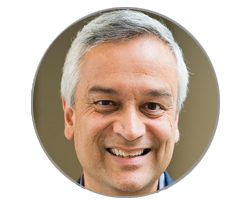
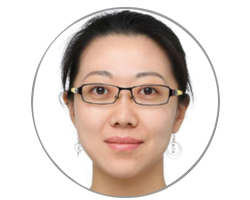

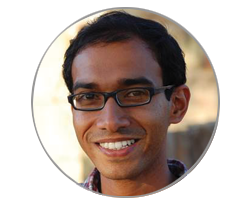
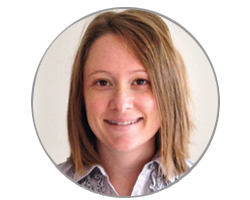
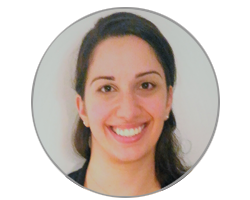
June 2018
- MIT Video Productions wins a third New England Emmy with a documentary film featuring the 2016 residency of visiting artist Jacob Collier.
- Hosted 29th Annual Science and Engineering Program for Teachers.
- The student-nominated Teaching with Digital Technology Award is presented to winners: Simone Socrate, Chris Caplice, Michael Yaffe, and Eric Huntley.
- OpenCourseWare (OCW) launches an upgraded Search tool for the site.
- Enrollment opens for new MITx MicroMasters in Statistics and Data Science.
- Chris Caplice is honored for creating the first MITx MicroMasters Program in Supply Chain Management.
- Bringing humanistic education in technical subjects to the world.
- MITili announced its first research grants, awarding 7 grants to innovative MIT research on the science of learning and learning effectiveness.
- First MITx MicroMasters cohort graduated from MIT’s blended master’s program, which combines a year’s worth of online learning with one semester on campus to earn a full MIT master’s degree.
- As of June 30th, MITx MicroMasters has 47 new pathways with 13 global schools from 9 countries.
- MITx on edX Data as of June 2018:
- 366 course runs (new and rerun).
- 3.1 million unique users.
- 6.7 million cumulative course registrations.
- 229,000 certificates awarded.
May 2018
- A new collaboration joins together MITx MicroMasters, Abdul Latif Jameel Poverty Action Lab, and MIT Refugee Action Hub to empower refugees worldwide by providing tools for social change.
- Higher Education @ J-WEL announces Spring 2018 grant winners. The projects will focus on re-designing, along with Colombian coffee farmers, technologies for different stages of the coffee production process in Colombia in the context of climate change adaptation; advancing socially-directed STEM education; facilitating a two-week intensive socioeconomic impacts and development potentials of information technologies workshop for Tanzanian computer science students; and supporting language teaching and curriculum development to help preserve the severely endangered Passamaquoddy language.
- J-WEL celebrates one year of transforming education.
- xTalks hosts MIT professor David Pritchard on 10 Reasons to Replace Midterms with Weekly Online Quizzes.
- Krishna Rajagopal, Dean for Digital Learning, explains how to explore the quantum chromodynamics phase diagram.
- OpenCourseWare opens up a whole new career for a former chemistry PhD candidate.
- The MITx Prize for Teaching and Learning in MOOCs is presented to Chris Caplice and Justin Reich, and both are nominated for the edX Prize.
- OCW publishes its 200th Instructor Insights section with the 24.912J Black Matters course.
- xTalks hosts Dr. Kyle Keane and Dr. Peter Barendse on Activating Computational Thinking on MITx using Wolfram Technologies.
- Courses on MITx support computational thinking to MIT students in class.
- The MITx Grant Program announces funding awarded to 16 new projects.
- MIT xPRO offered online professional development courses in Data Science and Big Data Analytics, Quantitative Methods in Systems Engineering, and more. Explore some of xPRO’s recent and upcoming courses designed to help solve industry problems.
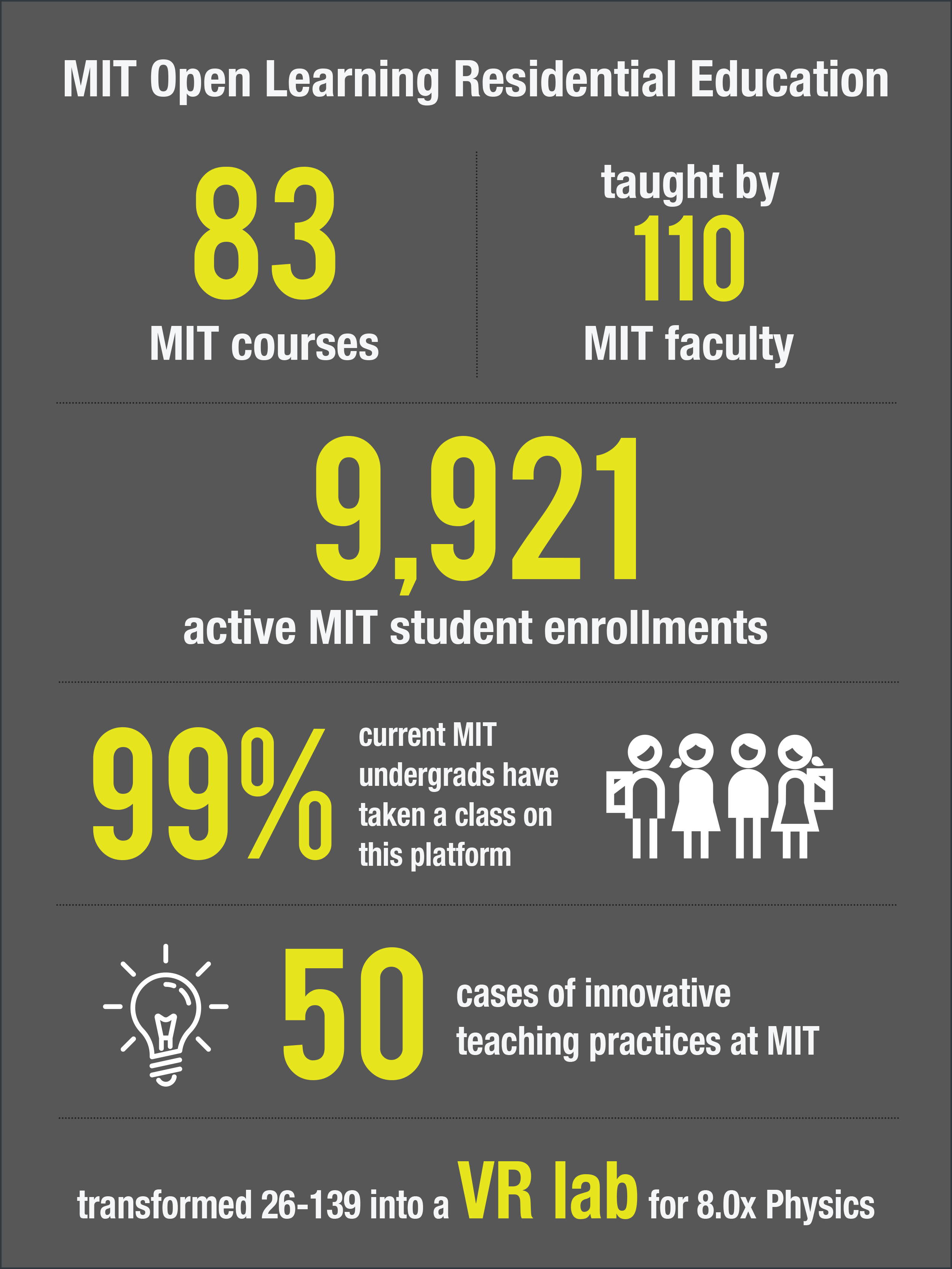
April 2018
- Hosted an online live event to celebrate learners who earned the MITx MicroMasters in Supply Chain Management credential. Sanjay Sarma, Chris Caplice, Eva Ponce, previous credential earners, and other special guests congratulate and commemorate the achievement of new credential holders.
- Institute for Data, Systems, and Society announce the launch of new MicroMasters and PhD programs.
- xTalks hosts Robert Sedgewick, the founding chair and the William O. Baker Professor in the Department of Computer Science at Princeton on A 21st Century Model for Disseminating Knowledge.
- OCW celebrates 17 years of open learning.
- Purdue University joins MITx MicroMasters program pathways.
- Collaborated with Boeing to scale learning in additive manufacturing.
- xTalks hosts Dr. Natalia Kucirkova, Senior Research Fellow at the Department for Learning & Leadership, UCL Institute of Education, London, UK on Personalization and Young Children: the Good, the Bad, and the Ugly.
- MITili Deputy Director Parag Pathak is awarded the John Bates Clark Medal.
- MIT Bootcamps offers Corporate Innovation & Leadership Bootcamp in Istanbul, Turkey.
- OCW publishes Brains, Minds and Machines: An Interdisciplinary Tour-de-Force.
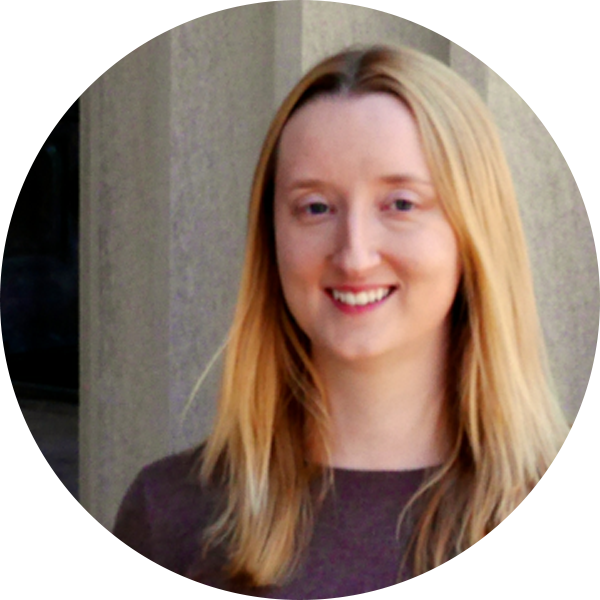
Spotlight on Mary Ellen Wiltrout, MITx Digital Learning Lab
Dr. Mary Ellen Wiltrout is an MITx Digital Learning Scientist in the Department of Biology. She received her PhD in biology studying translesion synthesis at MIT. Since 2009, she has worked in education and curriculum development, teaching her own courses, overseeing the development of innovative digital learning content and tools, and conducting education research. Read the complete article.
March 2018
- Abdul Latif Jameel World Education Lab holds second J-WEL Week.
- xTalks hosts Dr. Rajesh Bhaskaran who leads the Swanson Engineering Simulation Program in the Sibley School of Mechanical and Aerospace Engineering at Cornell University on A New Paradigm in Engineering Education Using Two Disruptive Technologies: Simulations & Online Learning.
- Supported Girls Day, a biannual event celebrating women in the science, technology, engineering, and math (STEM) fields.
- CLIx project receives UNESCO's 2017 King Hamad bin Isa Al-Khalifa Prize for the Use of Information and Communication Technologies in Education award.
- xTalks hosts Taso DuVal, co-founder and CEO of Toptal on Building Trust, Quality and Integrity on the Internet, at Scale.
- Boeing and NASA partner with MIT xPRO to develop professional training courses on Architecture and Systems Engineering: Models and Methods to Manage Complex Systems for Boeing and NASA employees, as well as the general public.
- Reach Every Reader, a collaboration between MIT and Harvard, launches with the aim of ending early literacy crisis.
- Dana Doyle, Director, MITx Program receives the 2018 MIT Excellence Award for Bringing Out the Best.
February 2018
- J-WEL grant award announcement and call for proposals in education innovation.
- Inaugural program from MIT for global innovators, entrepreneurs, and change-makers, called MIT Innovation & Entrepreneurship Bootcamp takes place in Brisbane, Queensland, Australia. MIT Bootcamps also runs the connected Sustainability in Context Trek to the Great Barrier Reef and Lady Elliot Island in Australia.
- The ClimateX podcast completes Season 2 on the theme of climate justice, and tops Google Search rankings for climate change podcasts.
- MIT Bootcamps and Harvard Medical School Center for Primary Care launch the MIT-HMS Healthcare Innovation Bootcamp.

Contributing to the Open Source Ecosystem
The term “open source” describes software—ranging from games to operating systems to educational tools—whose source code is publicly available for reuse, redistribution, and modification. Open source has also evolved into what some call a philosophy of collaboration and transparency that extends beyond technology. “These values have been part of the MIT culture for a long time,” says Peter Pinch, Associate Director of Engineering at Open Learning, “and have inspired Open Learning’s Engineering and Operations Unit since its founding.” Read the complete article.
January 2018
- Supported Refugee Action (ReACT) Certificate Program which offers refugees a career boost through MITx courses and in-person instruction.
- Co-sponsored with Vice Chancellor’s Office the 2nd annual Institute-wide Festival of Learning, featuring Nobel Laureate Carl Wieman, faculty teaching innovators, and a hands-on Learning Expo.
- Worked with the American University in Cairo (AUC) to grant course credits to their students who successfully complete the MITx MicroMasters in Data, Economics, and Development Policy (DEDP).
- Launched new MITx MicroMasters program in Principles of Manufacturing.
- MITx MicroMasters in Supply Chain Management, the first students arrive on campus to pursue “hybrid” masters degrees.
- Co-sponsored Across Boundaries Conference with the LearnLaunch Institute.
- OCW adds a new tab For Educators on the homepage - helping educators quickly find teaching materials and instructor insights.
December 2017
- GE offers to interview to all Mass residents who complete MITx MicroMasters in supply chain management.
- xTalks hosts Claire Petitmengin, Professor Emerita at Mines-Télécom Institute and Member of the Archives Husserl, Ecole Normale Supérieure, Paris on Exploring the Hidden Side of Lived Experience through Micro-phenomenology.
- Teaching Systems Lab receives grant to address assessments in maker-centered education.
- xTalks hosts Wolfgang Ketterle & Lorna Gibson: Faculty Innovators.
- ClimateX produces podcasts and videos from the MIT-hosted Northeastern North American Climate Policy Summit.
- OCW unveils another site enhancement: dynamic sorting and filtering on course lists.
- The MITx Grant Program announces funding awarded to 10 new projects.
November 2017
- Boston Globe editorial on how online learning can ease economic inequality.
- xTalks hosts Dr. Kyle Keane, Ian Kim Riley, Andrew Ringler, and Mark Vrablic on Interactivity & Connectedness in the Classroom: Digital Tools for Collaborative Learning.
- Read President Reif’s Op-Ed in the Boston Globe about the coming transformation by automation—and how we can reinvent the future of work.
October 2017
- The Inversion Factor: How to Thrive in the IoT Economy, co-authored by Sanjay Sarma, Linda Bernardi and Kenneth Traub is published.
- MITili team conducts research on attention at Masie Learning 2017 conference. They spent two days with participants using a small EEG headband to record brain waves which can detect the amount of focus a learner has.
- The 2nd annual Boston STEM Week (Oct 23-28) ran in 30 Boston schools. More than 6,000 6-8th grade students and 250 teachers set aside their regular classwork over the 5 days to participate in innovative, hands-on science and engineering projects. Much of the curriculum was developed in collaboration with MIT.
- Abdul Latif Jameel World Education Lab holds inaugural J-WEL Week, which gathers educators, researchers, policy makers, and technologists from 27 countries to spark a global renaissance in education for all learners.
- Using Bitcoin's blockchain technology, the Institute has become one of the first universities to issue recipient-owned virtual credentials.
September 2017
- Shigeru Miyagawa was appointed Senior Associate Dean for Open Learning.
- CLIx uses technology to boost secondary education in India.
- xTalks hosts Lou Guenier, Pedagogical Director at 42 Silicon Valley on An Educational Revolution for a Digital World.
- MITx course and internships help STEM professionals return after a break from the workforce to care for family.
- xTalks hosts Shailendra Raj Mehta, President and Director of MICA in Ahmedabad, India on Free Speech and Academic Freedom in India and the West.
- xTalks hosts Chinmay Kulkarni, Assistant Professor at Carnegie-Mellon's HCI Institute on The Case for an Integrated Future of Learning and Work.
- MIT Bootcamps runs Beyond Food Bootcamp in Hsin Chu, Taiwan, focusing on food innovation and key areas of sustainability, transparency, and health.
- A new study co-authored by MIT Professor of Cognitive Science Laura Schulz finds that infants as young as 15 months can learn the value of hard work.
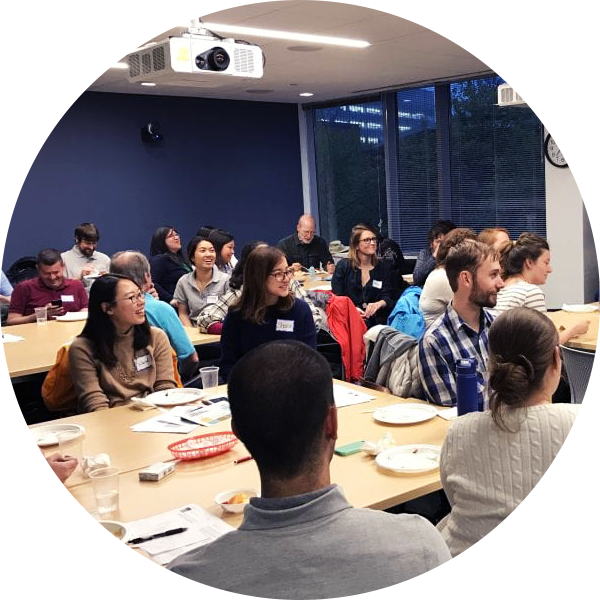
Reshaping teacher learning and supporting educators
This past year, Open Learning hosted six playtests where educators provided feedback on prototypes coming out of the Teaching Systems Lab (TSL), while also learning about the latest developments in games and simulations in teacher education. Along with recent improvements to the OCW Educator Portaland the launching of the Woodrow Wilson Academy, a graduate school of education, these events underscore Open Learning’s commitment to transforming the education landscape for both learners and teachers, on campus and around the world. Read the complete article.
August 2017
- Justin Reich, executive director at the MIT Teaching Systems Lab, is named to the faculty of Comparative Media Studies | Writing.
- Justin Reich looks to transform educational settings by equipping teachers with the technology tools they need to best serve all students.
- MIT Bootcamps hosts Business of Culture Trek in Vienna and Salzburg, Austria.
- OCW publishes new OCW Scholar course, 5.111SC Principles of Chemical Science.
- Political Science debuts on MITx with Democracy and Development: Perspectives from Africa, the first MIT Political Science class produced exclusively for MITx on edX.
- Why This MIT Professor Wants to Help Everyone Learn Basic Economics.
July 2017
- Professor Krishna Rajagopal named Open Learning’s Dean for Digital Learning.
- Faculty and instructors are recognized for improving classroom instruction and student engagement through innovative uses of digital technology with the Second annual MIT Teaching with Digital Technology Awards.
- OCW publishes 2,400 courses.
- MIT’s first blended Master’s program a resounding success, creating new ways to surface talented students and a potential new model for graduate admissions.
- OCW publishes new version of 8.01 Classical Mechanics.
- ClimateX, an open online community for climate learning and collaboration, launches its podcast “Climate Conversations.”
- A new study by MIT, Harvard, and NYU looks at the role of games in helping preschool children succeed in math.
Thank you again for supporting MIT Open Learning!

